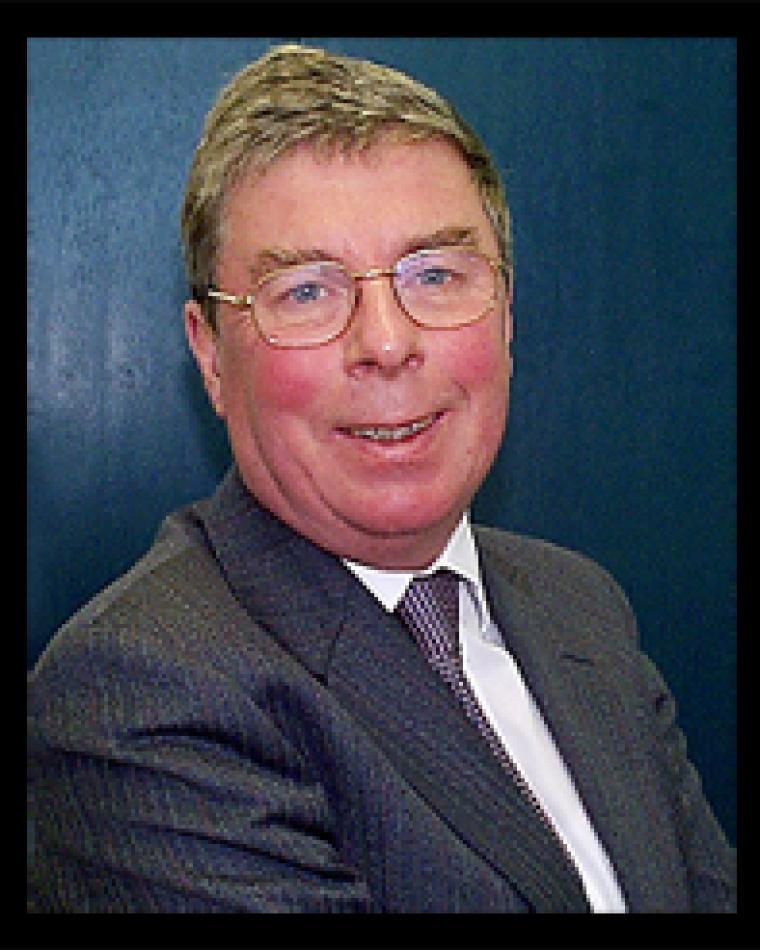
Gordon Donaldson
Gordon Donaldson
Contact Menu
(PO17U). Gordon Bryce Donaldson was born in Edinburgh, Scotland on August 10, 1941 and died in Glasgow on November 28, 2012 at the age of 71.
Gordon was an undergraduate student at Christ's College, Cambridge from 1959 to 1962, when he received his BA. He and Christine were married in 1962, shortly after his graduation. Subsequently, he was a research student at the Royal Society Mond Laboratory, Cambridge from 1962 to 1965, when he received his Ph.D.
Under the supervision of John Adkins, Gordon measured the energy gap in Zn-ZnO-Zn tunnel junctions and investigated the subgap quasiparticle resistance of Al-AlOx-Ag tunnel junctions as an ultralow temperature thermometer. Immediately after receiving his Ph.D., Gordon became a Lecturer in the Physics Department at the newly created Lancaster University. He spent 1974 1975 on sabbatical leave at the University of California, Berkeley where, together with Mark Ketchen, Wolf Goubau and John Clarke, he developed the first thin-film, planar gradiometer based on a dc SQUID (Superconducting QUantum Interference Device).
In 1975, Gordon retuned to Scotland as a Lecturer in the Department of Applied Physics at the University of Strathclyde, Glasgow. In 1985 he became Professor of Applied Physics, a position he occupied until his retirement in 2006. On his arrival in Glasgow Gordon quickly established a new research group to make SQUIDs for useful applications. From modest beginnings with two staff and one tiny laboratory, the group grew steadily until, at its peak, it had approaching thirty members, plus a host of collaborators worldwide.
He and colleagues at Glasgow University and the city's Southern General Hospital secured substantial funding from the Wellcome Trust to set up a new biomagnetism facility in 1988 on the hospital campus, using SQUID gradiometers made at Strathclyde for measurements on patients and volunteers. Studies over ten years included fetal, stereopsis and spinal and peripheral nerve measurements.
Another of his main research interests was the use of SQUIDs for non-destructive evaluation (NDE), targeted at defects in aluminum and carbon-fiber aircraft components. This started long before the discovery of high temperature superconductors (HTS), initially with wire-wound gradiometers and niobium SQUIDs, but soon progressed to miniature thin-film niobium integrated SQUID gradiometers, made in the dedicated facility at Strathclyde. This was followed by major programs to develop and demonstrate HTS gradiometers for NDE, supported by a pulsed laser deposition system developed in the Group to grow HTS films and bi-crystal junctions.
Notable advances included the development of semi-portable NDE systems for use on curved surfaces and the application of neural nets to the interpretation of defects in carbon fiber composites. Gordon was very active within the superconducting community. He organized the International Superconductivity Conference (ISEC) at the University of Strathclyde in 1991. He was Coordinator for the UK Committee on High-Transition Temperature Superconductivity.
In 1991 he founded the Cambridge Winter School in Superconductivity to train junior researchers from the UK and overseas. He was Chair of the Low Temperature Group of the Institute of Physics, London. He spent productive sabbatical leaves at the University of Virginia in 1982 and at CSIRO in Sydney in 1999. His many achievements were recognized by his election as a Fellow of the Royal Society of Edinburgh in 1991.
Gordon is survived by his wife, Christine, by his children, Ian and Anne, and by two grandchildren.
We are grateful to Ian and Anne Donaldson for their help in preparing this remembrance.